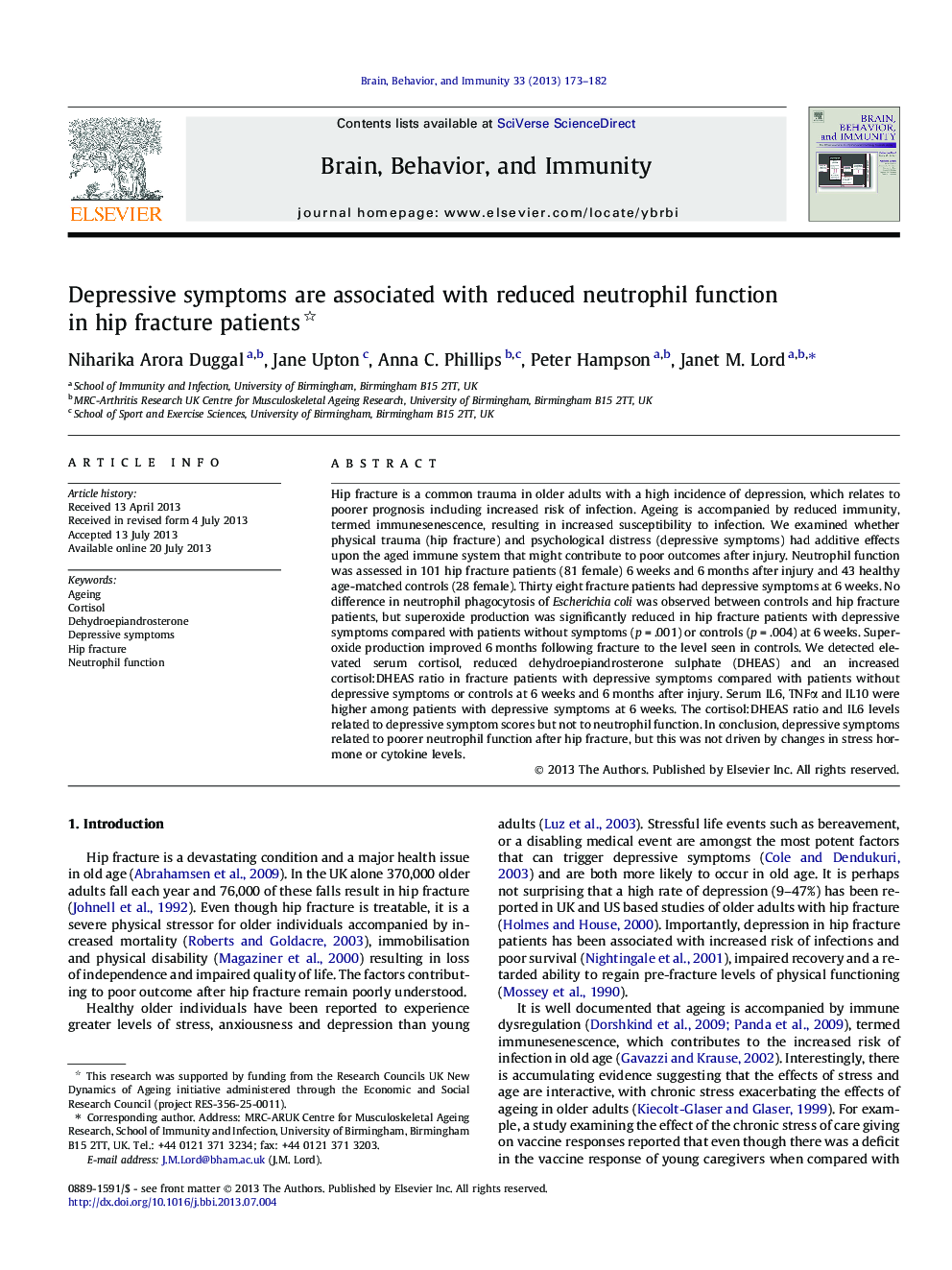| کد مقاله | کد نشریه | سال انتشار | مقاله انگلیسی | نسخه تمام متن |
|---|---|---|---|---|
| 7282034 | 1473934 | 2013 | 10 صفحه PDF | دانلود رایگان |
عنوان انگلیسی مقاله ISI
Depressive symptoms are associated with reduced neutrophil function in hip fracture patients
ترجمه فارسی عنوان
علائم افسردگی با کاهش عملکرد نوتروفیل در بیماران مبتلا به شکستگی هیپ همراه است
دانلود مقاله + سفارش ترجمه
دانلود مقاله ISI انگلیسی
رایگان برای ایرانیان
کلمات کلیدی
موضوعات مرتبط
علوم زیستی و بیوفناوری
ایمنی شناسی و میکروب شناسی
ایمونولوژی
چکیده انگلیسی
Hip fracture is a common trauma in older adults with a high incidence of depression, which relates to poorer prognosis including increased risk of infection. Ageing is accompanied by reduced immunity, termed immunesenescence, resulting in increased susceptibility to infection. We examined whether physical trauma (hip fracture) and psychological distress (depressive symptoms) had additive effects upon the aged immune system that might contribute to poor outcomes after injury. Neutrophil function was assessed in 101 hip fracture patients (81 female) 6 weeks and 6 months after injury and 43 healthy age-matched controls (28 female). Thirty eight fracture patients had depressive symptoms at 6 weeks. No difference in neutrophil phagocytosis of Escherichia coli was observed between controls and hip fracture patients, but superoxide production was significantly reduced in hip fracture patients with depressive symptoms compared with patients without symptoms (p = .001) or controls (p = .004) at 6 weeks. Superoxide production improved 6 months following fracture to the level seen in controls. We detected elevated serum cortisol, reduced dehydroepiandrosterone sulphate (DHEAS) and an increased cortisol:DHEAS ratio in fracture patients with depressive symptoms compared with patients without depressive symptoms or controls at 6 weeks and 6 months after injury. Serum IL6, TNFα and IL10 were higher among patients with depressive symptoms at 6 weeks. The cortisol:DHEAS ratio and IL6 levels related to depressive symptom scores but not to neutrophil function. In conclusion, depressive symptoms related to poorer neutrophil function after hip fracture, but this was not driven by changes in stress hormone or cytokine levels.
ناشر
Database: Elsevier - ScienceDirect (ساینس دایرکت)
Journal: Brain, Behavior, and Immunity - Volume 33, October 2013, Pages 173-182
Journal: Brain, Behavior, and Immunity - Volume 33, October 2013, Pages 173-182
نویسندگان
Niharika Arora Duggal, Jane Upton, Anna C. Phillips, Peter Hampson, Janet M. Lord,
